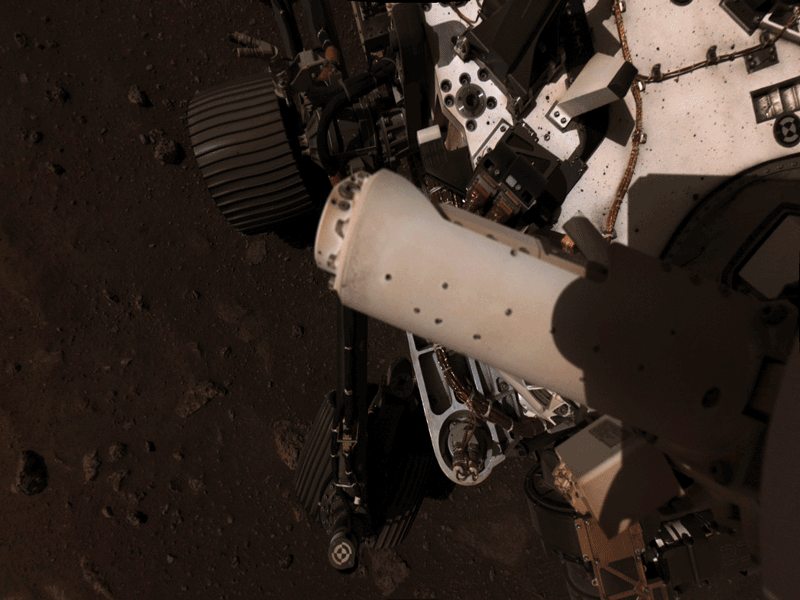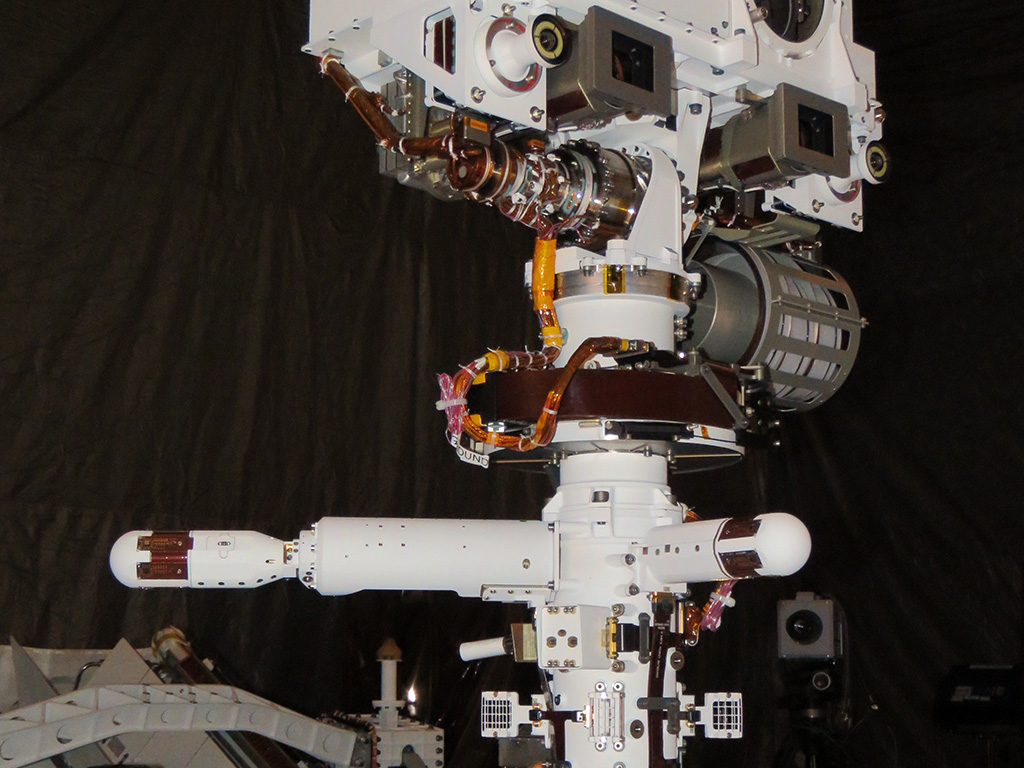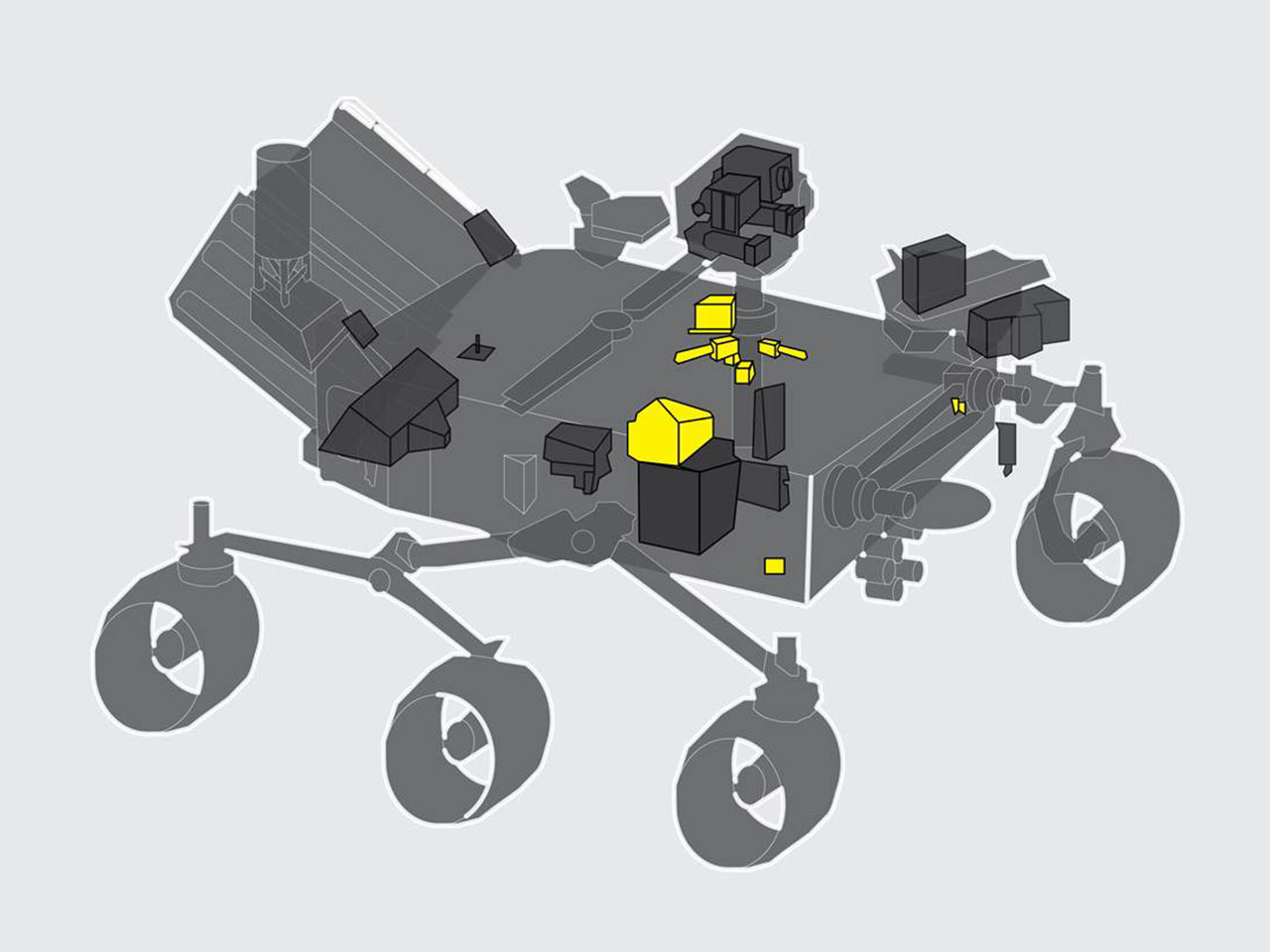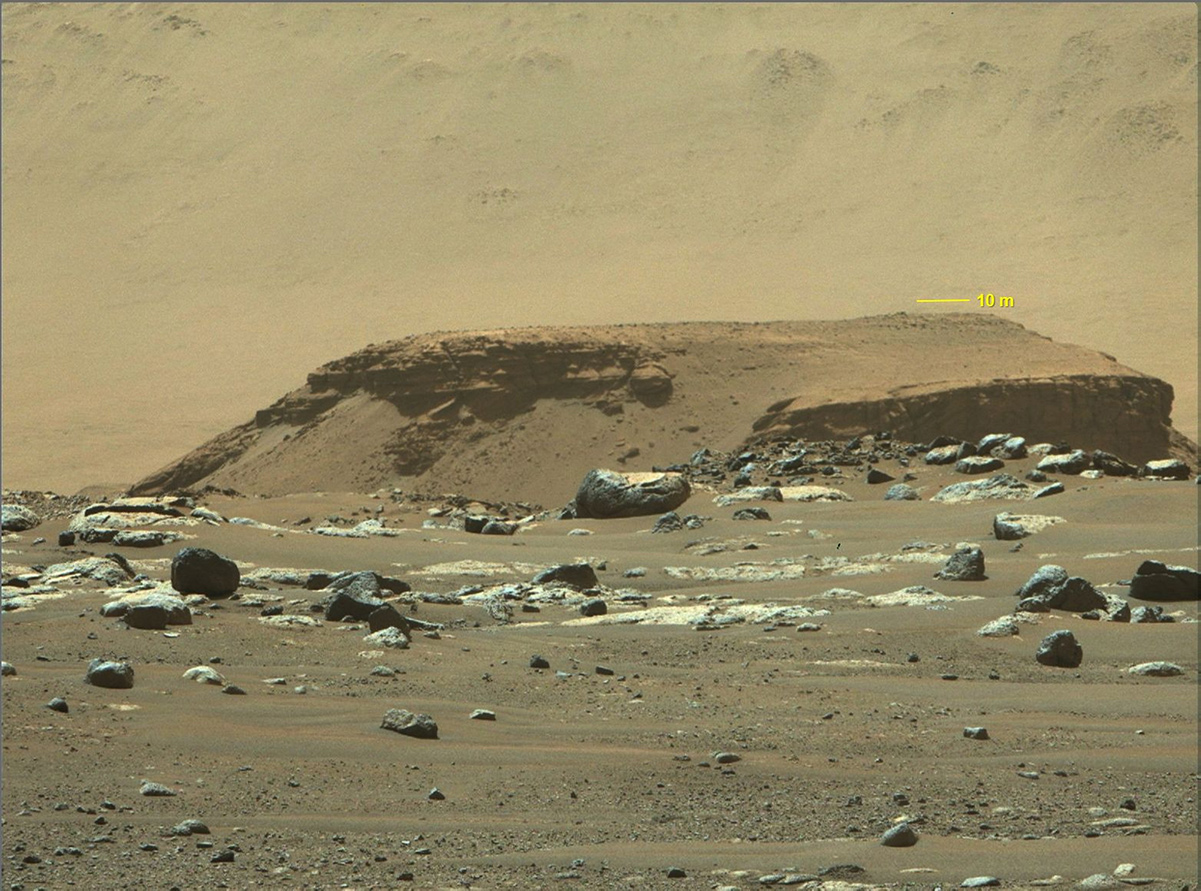Lee esta historia en español aquí.
The weather often plays a role in our daily plans. You might put on a light jacket when the forecast calls for a cool breeze or delay your travel plans because of an impending storm. NASA engineers use weather data to inform their plans, too, which is why they’re analyzing the conditions millions of miles away on Mars.
The Mars Environmental Dynamics Analyzer (MEDA) system aboard NASA’s Perseverance rover first powered on for 30 minutes Feb. 19, approximately one day after the rover touched down on the Red Planet. Around 8:25 p.m. PST that same day, engineers received initial data from MEDA.
“After a nail-biting entry descent and landing phase, our MEDA team anxiously awaited the first data that would confirm our instrument landed safely,” said Jose Antonio Rodriguez Manfredi, MEDA principal investigator with the Centro de Astrobiología (CAB) at the Instituto Nacional de Tecnica Aeroespacial in Madrid. “Those were moments of great intensity and excitement. Finally, after years of work and planning, we received the first data report from MEDA. Our system was alive and sending its first meteorological data and images from the SkyCam.”
MEDA weighs roughly 12 pounds (5.5 kilograms) and contains a suite of environmental sensors to record dust levels and six atmospheric conditions – wind (both speed and direction), pressure, relative humidity, air temperature, ground temperature, and radiation (from both the Sun and space). The system wakes itself up every hour, and after recording and storing data, it goes to sleep independently of rover operations. The system records data whether the rover is awake or not, both day and night.
As engineers received MEDA’s first data points on Earth, the team pieced together its first weather report from the Jezero Crater on Mars.
The data showed it was just below minus 4 degrees Fahrenheit (minus 20 degrees Celsius) on the surface when the system started recording, and that temperature dropped to minus 14 degrees Fahrenheit (minus 25.6 degrees Celsius) within 30 minutes.
MEDA’s radiation and dust sensor showed Jezero was experiencing a cleaner atmosphere than Gale Crater around the same time, roughly 2,300 miles (3,700 kilometers) away, according to reports from the Rover Environmental Monitoring Station (REMS) aboard the Curiosity rover stationed inside Gale. And MEDA’s pressure sensors told engineers the pressure on Mars was 718 Pascals, well within the 705-735 Pascal range predicted by their models for that time on Mars.
Bridging the Atmospheric Gap
Thanks to telescopes here on Earth and spacecraft orbiting Mars, scientists have a good understanding of the Red Planet’s climate and even some insight into the magnitude of dust storms throughout a single Martian year (two Earth years). However, predicting dust lifting and transport, or how small storms evolve into large ones encircling the whole planet, will benefit future science and exploration missions.
Over the next year, MEDA will provide valuable information on temperature cycles, heat fluxes, dust cycles, and how dust particles interact with light, ultimately affecting both the temperature and weather. Just as important will be MEDA’s readings of solar radiation intensity, cloud formations, and local winds that might inform the design of the planned Mars Sample Return mission. Additionally, the measurements will help engineers better understand how to prepare humans and habitats to deal with the conditions on Mars.
REMS aboard the Curiosity rover currently provides similar daily weather and atmospheric data. MEDA, conceived through an international collaboration, builds upon REMS’ autonomous weather station setup and features a few upgrades. The system was provided by Spain and developed by CAB with contributions from the Finnish Meteorological Institute. The U.S. contributions were funded by the Game Changing Development program within NASA’s Space Technology Mission Directorate.
Boasting higher overall durability and additional temperature readings, MEDA can record the temperature at three atmospheric heights: 2.76 feet (0.84 meters), 4.76 feet (1.45 meters), and 98.43 feet (30 meters), in addition to the surface temperature. The system uses sensors on the rover’s body and mast and an infrared sensor capable of measuring temperature nearly 100 feet above the rover. MEDA also records the radiation budget near the surface, which will help prepare for future human exploration missions on Mars.
With MEDA’s weather reports, engineers now have atmospheric data from three different locations on the Red Planet – Perseverance, Curiosity, and NASA’s InSight lander, which hosts the Temperature and Wind sensors for InSight (TWINS). The trio will enable a deeper understanding of Martian weather patterns, events, and atmospheric turbulence that could influence planning for future missions. In the near term, MEDA’s information is helping decide the best atmospheric conditions for the Ingenuity Mars Helicopter flights.
As Ingenuity achieved pre-flight milestones, a MEDA report from the 43rd and 44th Martian days, or sols, of the mission (April 3-4 on Earth) showed a temperature high of minus 7.6 degrees Fahrenheit (minus 22 degrees Celsius) and low of minus 117.4 degrees Fahrenheit (minus 83 degrees Celsius) in Jezero Crater. MEDA also measured wind gusts at around 22 mph (10 meters per second).
“We’re very excited to see MEDA working well,” said Manuel de la Torre Juárez, deputy principal investigator for MEDA at NASA’s Jet Propulsion Laboratory in Southern California. “MEDA’s reports will provide a better picture of the environment near the surface. Data from MEDA and other instrument experiments will reveal more pieces of the puzzles on Mars and help prepare for human exploration. We hope that its data will help make our designs stronger and our missions safer.”
More About Perseverance
The key objective for Perseverance’s mission on Mars is astrobiology, including the search for signs of ancient microbial life. The rover will characterize the planet’s geology and past climate, pave the way for human exploration of the Red Planet, and be the first mission to collect and cache Martian rock and regolith (broken rock and dust).
Subsequent NASA missions, in cooperation with ESA (European Space Agency), would send spacecraft to Mars to collect these sealed samples from the surface and return them to Earth for in-depth analysis.
The Mars 2020 Perseverance mission is part of NASA’s Moon to Mars exploration approach, which includes Artemis missions to the Moon that will help prepare for human exploration of the Red Planet.
JPL, which is managed for NASA by Caltech in Pasadena, California, built and manages operations of the Perseverance rover.
For more about Perseverance:
and
For news media:
Members of the news media interested in covering this topic should reach out to:
Clare Skelly / Andrew Good
Headquarters, Washington / Jet Propulsion Laboratory, Pasadena, Calif.
202-358-4273 / 818-393-2433
clare.a.skelly@nasa.gov / andrew.c.good@jpl.nasa.gov
Written by Hillary Smith
NASA’s Game Changing Development Program



























